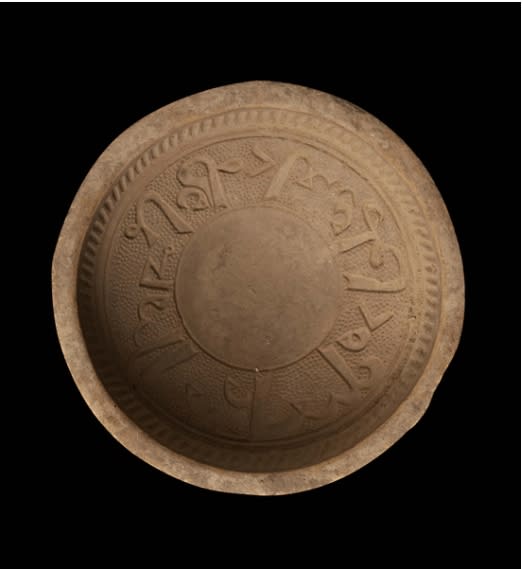Mould with Epigraphic Band, 800 CE - 1200 CE
Clay
6.75
LO.542
In spite of the ever increasing interest in Islamic ceramics, information on kilns, moulds and other related objects is still relatively scarce. What is known is that moulds were used...
In spite of the ever increasing interest in Islamic ceramics, information on kilns, moulds and other related objects is still relatively scarce. What is known is that moulds were used even before the creation of fritware, for the production of lead glazed relief ware during the early Abbasid period (8th-9th centuries CE), and always were made of red or buff earthenware. A reliable attribution of provenance and dating is quite a difficult task, since the actual place whence these moulds originated is not known.
The moulds can be typologically divided into two groups: moulds for the interior of the vessel and moulds for the shaping of the exterior of the vessel. The mould here illustrated is made of red earthenware in a hemispherical form, the inside carrying the bas-relief decoration, consisting of a concentric epigraphic band of plaited Kufic characters, set against a busy dotted background, confined on the rim by a band of incised vertical lines.
It is clear that it was used for the exterior decoration on a bowl of similar size, possibly one lead-glazed relief bowl, as the dotted background was characteristic of this type of early Abbasid period ware. For a comparable example see:
G. Fehervari, Ceramics of the Islamic world, 2000: no. 20, p. 37.
The moulds can be typologically divided into two groups: moulds for the interior of the vessel and moulds for the shaping of the exterior of the vessel. The mould here illustrated is made of red earthenware in a hemispherical form, the inside carrying the bas-relief decoration, consisting of a concentric epigraphic band of plaited Kufic characters, set against a busy dotted background, confined on the rim by a band of incised vertical lines.
It is clear that it was used for the exterior decoration on a bowl of similar size, possibly one lead-glazed relief bowl, as the dotted background was characteristic of this type of early Abbasid period ware. For a comparable example see:
G. Fehervari, Ceramics of the Islamic world, 2000: no. 20, p. 37.
